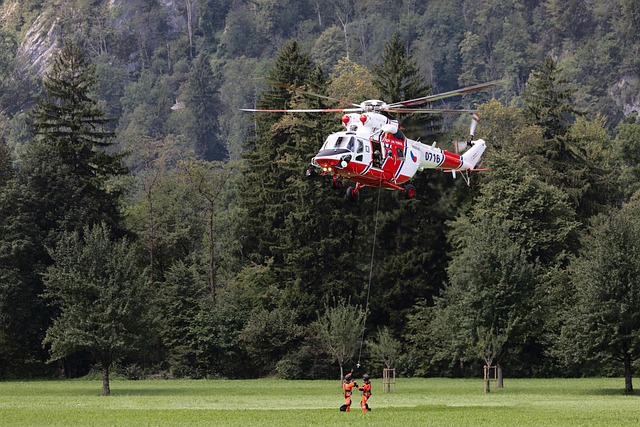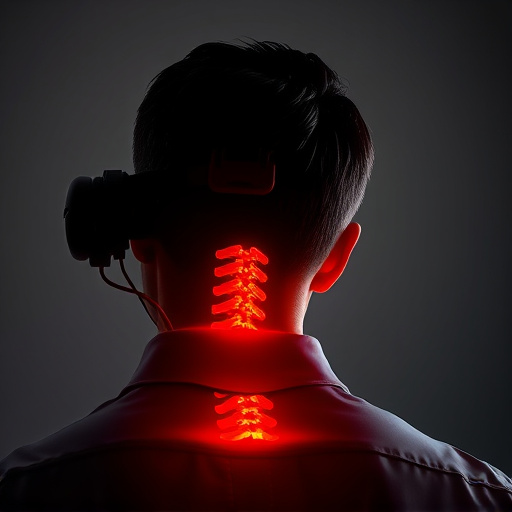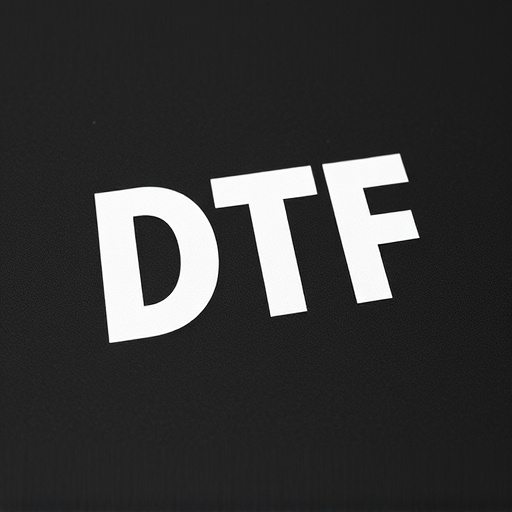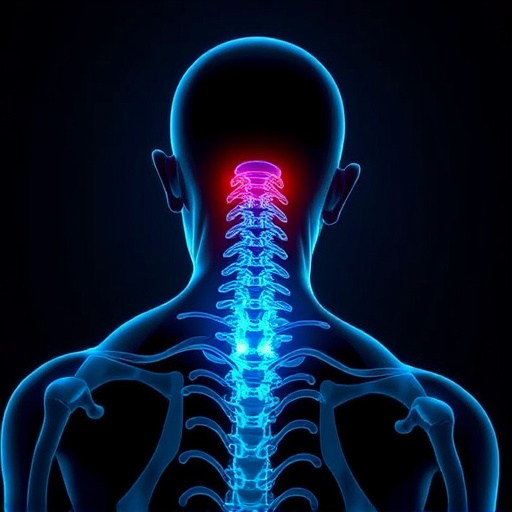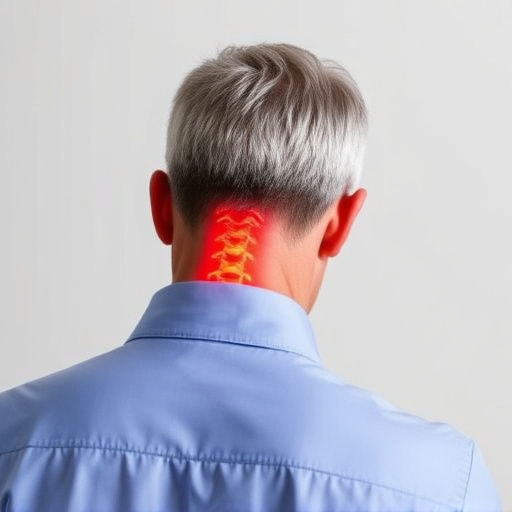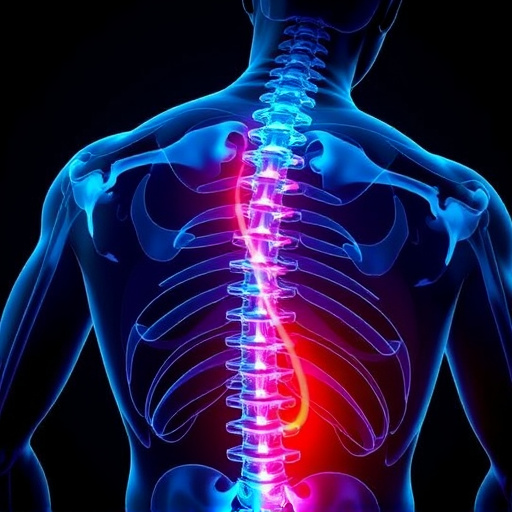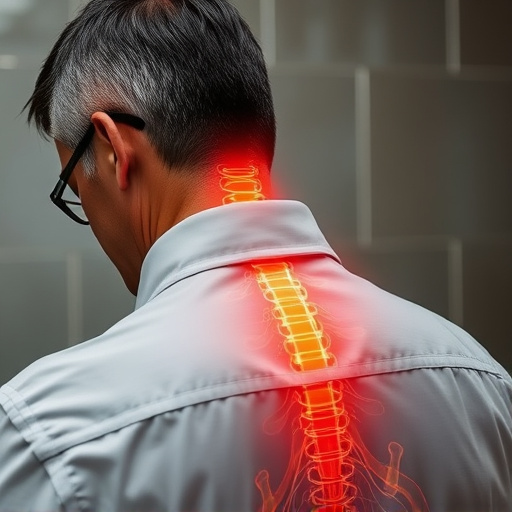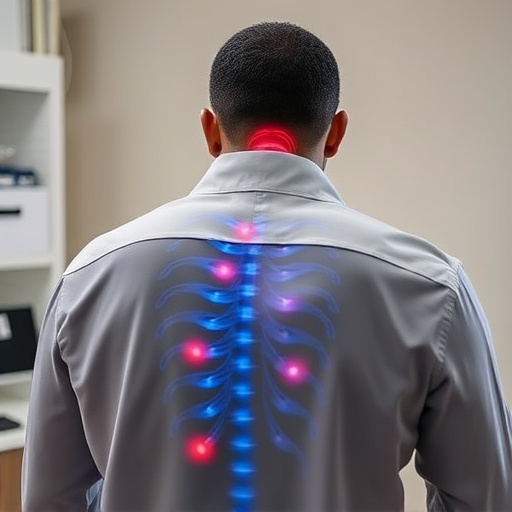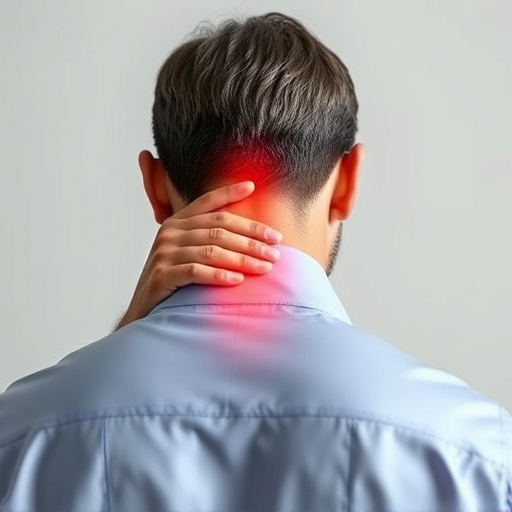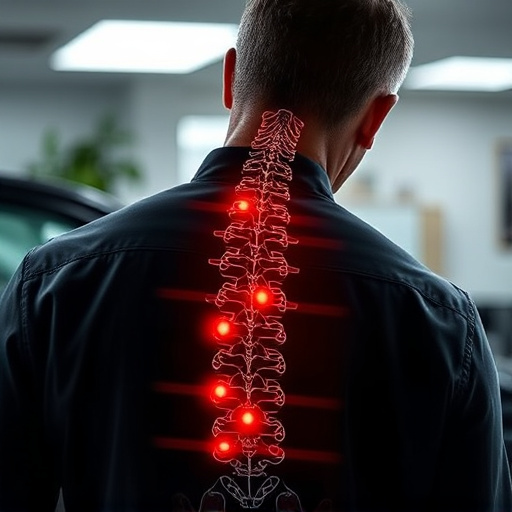Collision-related neck injuries are common after accidents, causing immediate and chronic neck pain. Effective treatment involves understanding symptoms and causes, combining traditional methods (rest, physical therapy, heat/ice) with advanced therapies (spinal manipulation, acupuncture). Physical therapy offers tailored interventions to improve mobility, posture, and muscle tension. Innovative treatments like TMS, functional rehab, yoga, and meditation enhance recovery alongside lifestyle changes: balanced posture, exercise, stress management, diet, hydration, weight control. Holistic approaches combining medical care (CBT) and therapy significantly alleviate persistent neck and back pain.
Collision-related neck injuries are a common consequence of vehicular accidents, causing significant discomfort and long-term issues if not properly managed. Understanding the causes and symptoms is the first step towards effective treatment. This article explores various approaches to alleviate neck pain, highlighting the pivotal role of physical therapy. We delve into innovative therapies and lifestyle modifications for accelerated recovery. Additionally, real-life case studies illustrate successful rehabilitation strategies, offering hope for those seeking neck and back pain relief after a collision.
- Understanding Collision-Related Neck Injuries: Causes and Symptoms
- Traditional Treatment Approaches for Neck Pain Relief
- The Role of Physical Therapy in Managing Post-Collision Neck Discomfort
- Innovative Therapies for Accelerating Recovery and Reducing Pain
- Lifestyle Modifications to Support Long-Term Neck Health
- Case Studies: Successful Rehabilitation Strategies for Collision Victims
Understanding Collision-Related Neck Injuries: Causes and Symptoms
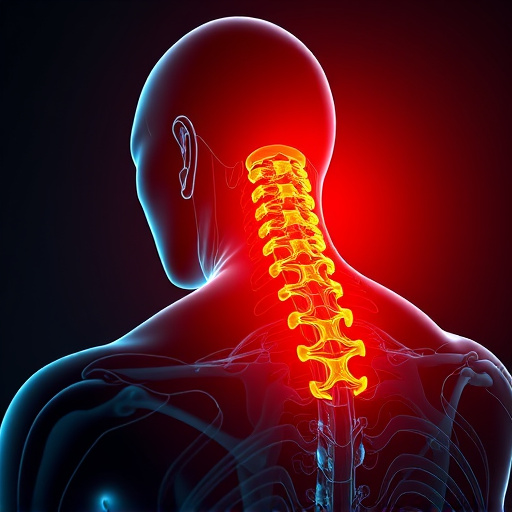
Collision-related neck injuries are a common occurrence, often resulting from car accidents or other impact incidents. These injuries can range from mild to severe and typically manifest as neck pain, stiffness, and reduced mobility. Understanding the causes and symptoms is essential for effective therapy and neck and back pain relief.
Such injuries usually stem from sudden, forceful impacts that stress or damage the complex network of muscles, ligaments, and vertebrae in the neck region. Common symptoms include immediate sharp pain, headaches, dizziness, and limited turning or bending of the head. Over time, these may escalate into chronic conditions if left untreated, affecting daily activities and overall quality of life.
Traditional Treatment Approaches for Neck Pain Relief
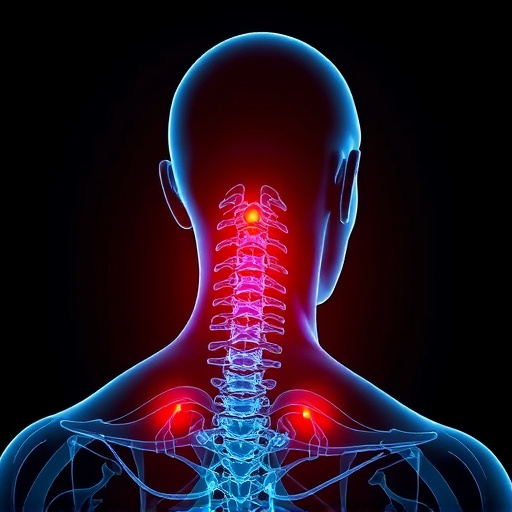
Many traditional treatment approaches aim to provide neck and back pain relief for collision-related neck injuries. These often include rest, physical therapy, over-the-counter pain medications, and in some cases, corticosteroids or muscle relaxants. Physical therapy plays a crucial role, focusing on exercises to improve flexibility, strength, and posture, along with manual therapy techniques like chiropractic adjustments. Resting for a few days after the injury can help reduce inflammation and allow the body to start the healing process; however, prolonged immobilization may weaken muscles and decrease mobility.
Additionally, heat or ice therapy is commonly used early on to manage pain and swelling. While these treatments offer short-term neck and back pain relief, addressing the underlying causes and strengthening techniques are key for long-lasting recovery. Modern approaches often integrate advanced therapies like spinal manipulation, massage, and acupuncture alongside more conventional methods to enhance neck and back pain relief and improve overall patient outcomes.
The Role of Physical Therapy in Managing Post-Collision Neck Discomfort
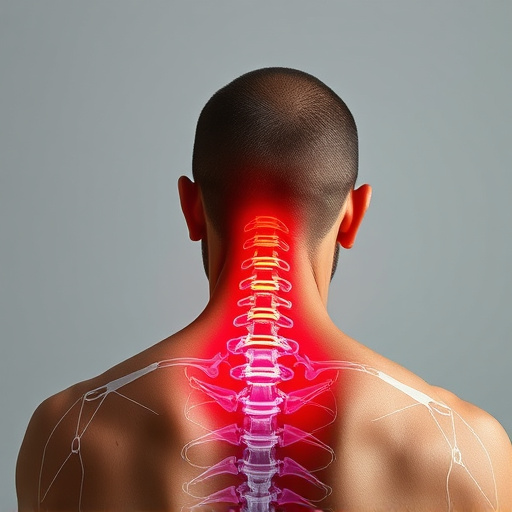
Physical therapy plays a pivotal role in managing post-collision neck discomfort, offering a comprehensive approach to alleviate neck and back pain relief. Following an accident, individuals often experience complex symptoms that require tailored interventions. Physical therapists are trained to assess and address these issues, focusing on techniques such as manual therapy, exercise prescription, and patient education.
Through specialized treatments, therapists can help reduce muscle tension, improve spinal mobility, and enhance overall posture, thereby contributing significantly to a patient’s recovery journey. By combining various therapeutic modalities, physical therapy not only provides immediate pain relief but also equips patients with long-term strategies to manage and prevent future neck injuries.
Innovative Therapies for Accelerating Recovery and Reducing Pain
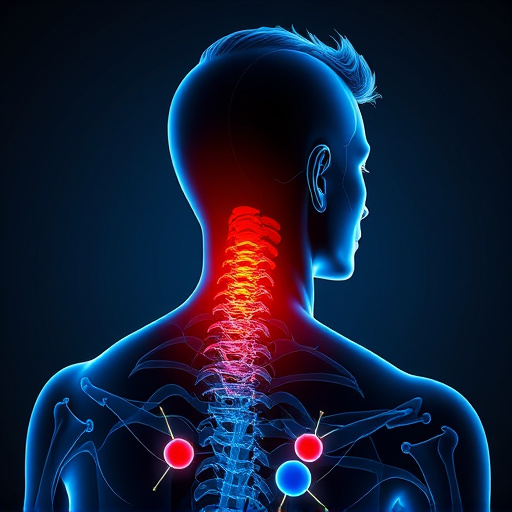
In the pursuit of effective collision-related neck injury therapy, innovative approaches have emerged to accelerate recovery and provide much-needed neck and back pain relief. Beyond traditional physical therapy, advanced techniques such as spinal manipulation, functional rehabilitation, and even technological interventions like transcranial magnetic stimulation (TMS) offer promising avenues for hastening the healing process. These cutting-edge methods not only target specific areas of injury but also incorporate holistic strategies to strengthen supporting muscles and improve posture, ultimately reducing reliance on long-term treatment.
One notable advancement is the integration of mind-body practices like yoga and meditation into therapeutic regimens. These activities not only alleviate stress but also enhance flexibility and core strength, contributing significantly to neck and back pain relief. Additionally, customized exercise programs tailored to individual needs can effectively manage symptoms while promoting overall well-being. Such innovative therapies, combined with a patient’s adherence to recovery protocols, hold great potential in transforming the treatment landscape for collision-related neck injuries.
Lifestyle Modifications to Support Long-Term Neck Health
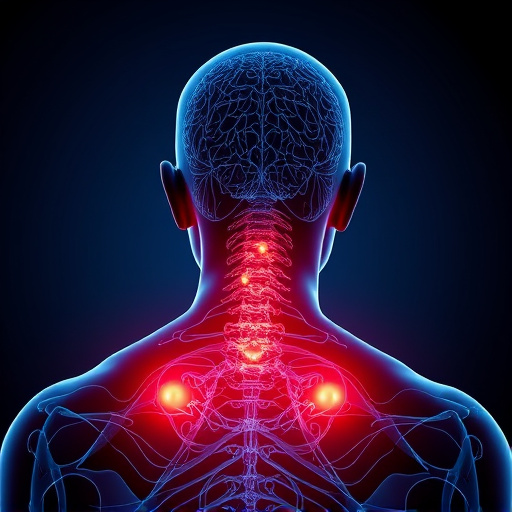
In addition to medical treatments, making sustainable lifestyle modifications can significantly contribute to long-term neck health and neck and back pain relief. This includes adopting a balanced posture during daily activities, whether sitting at a desk or lifting objects. Regular exercise focusing on core strength and flexibility, such as yoga or swimming, can help maintain muscle tone and range of motion in the neck. Furthermore, managing stress through relaxation techniques like meditation or deep breathing exercises has been shown to reduce tension and muscle strain.
Nutrition plays an essential role too. A diet rich in vitamins and minerals supports overall health and bone strength. Staying hydrated and avoiding excessive alcohol consumption can also alleviate pressure on the neck and back. Additionally, maintaining a healthy weight reduces the load on joints, contributing to better neck health and pain management.
Case Studies: Successful Rehabilitation Strategies for Collision Victims
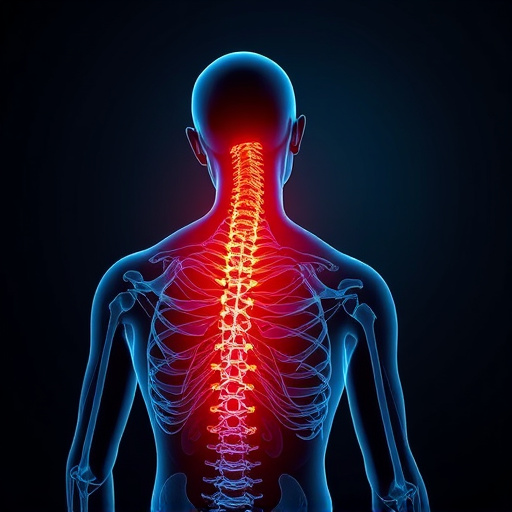
Collision-related neck injuries often lead to significant discomfort, including persistent neck and back pain. Case studies highlight successful rehabilitation strategies for collision victims, focusing on holistic approaches that combine medical interventions with therapeutic techniques. Physical therapy plays a pivotal role in managing pain and restoring mobility. Specialized exercises tailored to strengthen the cervical spine and improve posture can significantly alleviate symptoms and prevent future complications.
In many cases, cognitive behavioral therapy (CBT) has proven effective in addressing the psychological aspects of recovery. CBT helps collision victims manage pain by reframing negative thoughts and emotions associated with their injuries. This mental component is crucial for maintaining motivation throughout the rehabilitation process, ensuring that patients adhere to prescribed exercises and lifestyle changes for optimal neck and back pain relief.
